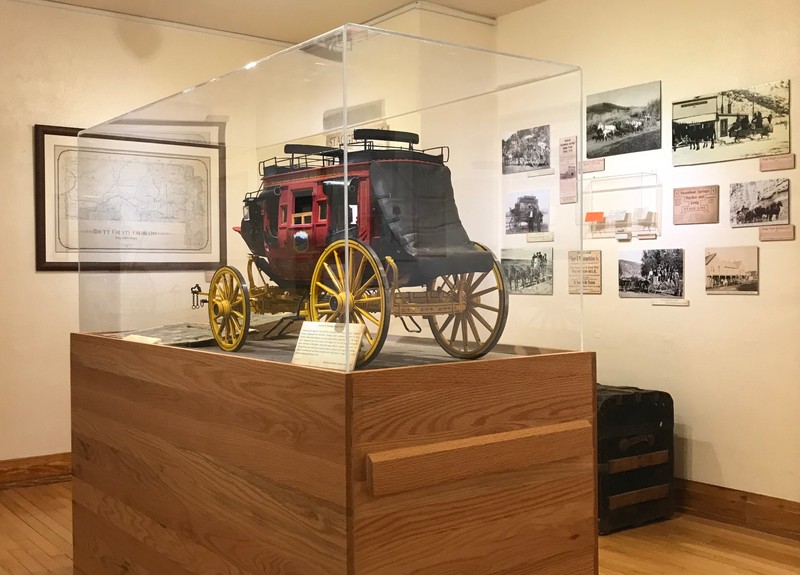Stagecoach & Train Exhibits
Introduction
Text-to-speech Audio
Images


Backstory and Context
Text-to-speech Audio
Northwest Colorado is considered one of the last regions of the United States to rely on horse-drawn stage services for a majority of the transportation in and out of the area and horse-drawn stage services did not become obsolete until 1915. Stagecoach services provided essential passenger service and U.S. Mail transportation to the region. In 1890 the stage route Craig to Hayden took three hours (today 20 minutes) and cost $4.00. The railroad arrived in Steamboat Springs in 1909 and Craig in 1913, this playing a part in the demise of the stagecoach. The arrival of the automobile and auto-roads also played a part.
When the Moffat Railroad Line reached Craig in 1913 the citizens were rightfully excited. The Moffat Road and the Moffat Tunnel were essential for a variety of reasons. The tunnel cut the distance between Denver and Northwestern Colorado by many miles, reducing the multiple grades, as well as reducing the winter blockades. The railroad provided connections for local farmers, cattle and sheep ranchers and miners to markets across the United States. More wool shipped out of Craig via rail than almost anywhere else. David Moffat planned to continue the railroad line through Craig west into Salt Lake City, Utah but funds dried up and he died in 1914, ending the line in Craig.
When the big homesteading wave came in the 1920s-30s, potential homesteaders were able to load their possessions onboard rail cars and set off to a new land. The railroad took weeks off the trip over the mountains for them. Residents of the Yampa Valley were able to take the train up or down valley to conduct business or travel farther east to the bright lights and more established cities on the other side of the Continental Divide. Tourists learned about the beauty of the high country and were able to board a train in New England and travel by rail all the way to the end of the line in Craig. Hunters and fishermen came as well as those who just wanted to experience the West.
The trip was still difficult during the winter months, when enormous drifts blocked the rails. Sometimes it took several days to clear the tracks and resume service. As larger engines were put on the line, the stoppages became fewer and farther apart.
The Denver and Rio Grande Western Railroad took over the Moffat Line in 1947, including the Moffat Tunnel that had been built using public funds. Within twenty-years the D&RGW decided that passenger service was no longer profitable. The last passenger train to arrive in Craig pulled in on April 7, 1968.
Today, although trains still run on what was the Moffat Road, they carry only coal and occasionally fuel and supplies. The dead-end line stops at Colowyo Mine south of Craig.
Sources
Stagecoach & Train Exhibit. Craig, CO: Museum of Northwest Colorado.
